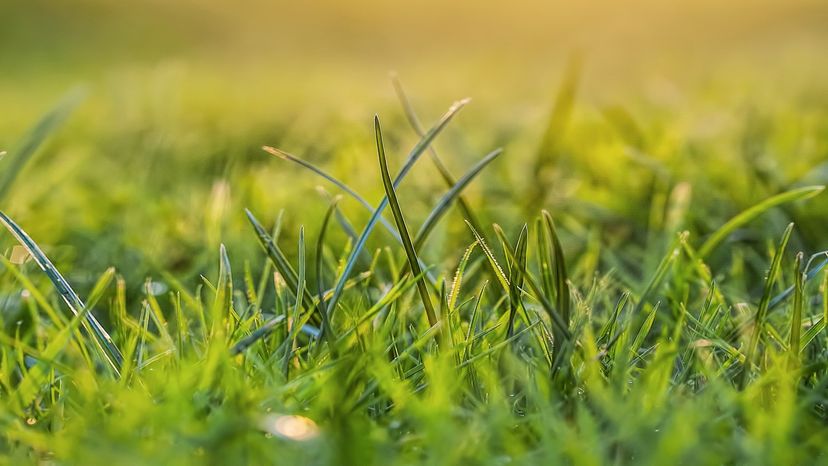
If you live in an apartment, you probably don't give much thought to grass. It's just the green backdrop to your on-the-go life.
But as soon as you plop down a deposit on your own piece of suburbia, strange thoughts start running through your mind. In the suburban world, grass seems very important, and you're consumed by its mysteries. Why does your neighbor's lawn glow deep green, like a rolling golf course, while yours withers to a brown mess, overrun by weeds? What makes perfect grass perfect? What do you need to do to maintain a beautiful lawn, short of shelling out hundreds of dollars to a professional lawn care service?
Advertisement
In this article, we'll find out what grass is, what it needs, and how you can make yours the best on the block. If you don't have your own lawn, or you couldn't care less what it looks like, none of this will seem very important. But if you're up late at night tossing and turning because the grass is greener on the other side of your fence, read on.
What is Grass?
Before we get into the peculiar world of lawn care, let's cover some basics. What exactly is grass?
Grass is the common name for the Gramineae family of plants. With more than 9,000 known species, this family is one of the largest on Earth.
Grass is extremely important to most people's lives, whether they know it or not. For one thing, grass is a major food source all over the world. Rice, corn and oats come from grass plants, for example, and most livestock animals feed primarily on grasses. In some parts of the world, people use grass plants in construction (bamboo is a grass, for example), and wherever it grows, grass plays a vital role in curbing erosion. Grass is also used to make sugar, liquor, bread and plastics, among many other things.

Grasses have a very simple structure, and a very simple way of life. You can better grasp what grass needs when you understand how it actually functions in the world.
At the base of the grass plant, roots grow down into the earth. Typically, grass roots are fibrous, or threadlike. They extend into the soil like fingers, collecting nutrients, soaking up water and securing the plant to the ground.
Grass stems, called culms, grow up from the base of the plant (the crown). In most grass species, the culms are hollow and rigid, except at the nodes -- joints that join stem segments together.
Narrow leaves extend out from the culms, above each node. The leaves alternate in direction. That is, if the first leaf on a culm grows to the right, the second leaf will grow to left and the third leaf will grow to the right and so on.
The lower part of the leaf is called the sheath, and the upper part is called the blade. In most grasses, a ligule surrounds the connection between the sheath and the blade. A ligule can take the form of a thin membrane or a fringe of hair-like projections.
Like the leaves on a tree, grass leaves serve to collect energy from sunlight through photosynthesis. The photosynthesizing chlorophyll in the leaf gives grass its green color.
There are two major methods of reproduction in grasses. Some grasses have additional stems that grow sideways, either below ground or just above it. Stems that creep along the ground are called stolons, and stems that grow below ground are called rhizomes. Grasses use stolons and rhizomes to reach out and establish new grass culms. The stoleon or rhizome nurtures the new plant until it is strong enough to survive on its own.
Grasses also have flowers. The small flowers in most grass species are known as florets. Florets grow together in small groups called spikelets, which collectively form inflorescences. Flowers produce the spores that pollinate other flowers, which produce seeds. With any luck, some of the seeds will grow new healthy grass plants. (This site explains grass reproduction in detail.)
In some grasses, such as corn, the stem and the flowering part of the plant are obvious. But in lawn grasses, the long thin leaves overshadow the other elements of the plant. Unless you're up close, all you see is green stalks.
Advertisement
